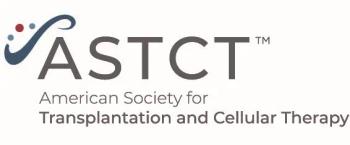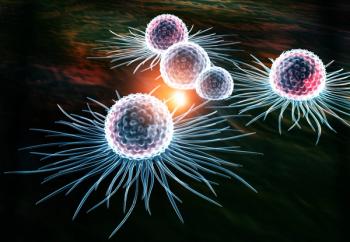
Oncology NEWS International
- Oncology NEWS International Vol 9 No 7
- Volume 9
- Issue 7
STI-571 Targets More Advanced-Stage CML and Acute Leukemias
ASCO-STI-571, an investigational drug that has high activity in benign-phase chronic myelogenous leukemia (CML), also produces significant hematologic responses in patients with advanced-stage CML or acute forms of leukemia, Moshe Talpaz, MD, said at the 36th annual meeting of the American Society of Clinical Oncology (ASCO) in New Orleans.
ASCOSTI-571, an investigational drug that has high activity in benign-phase chronic myelogenous leukemia (CML), also produces significant hematologic responses in patients with advanced-stage CML or acute forms of leukemia, Moshe Talpaz, MD, said at the 36th annual meeting of the American Society of Clinical Oncology (ASCO) in New Orleans.
The phase I trial was conducted by Dr. Talpaz, of M.D. Anderson Cancer Center, in conjunction with Charles Sawyer, MD, of UCLA Jonsson Cancer Center, and Brian Druker, MD, of Oregon Health Sciences University.
STI is very active in inducing hematologic remissions in chronic-phase patients. I cant say that we expected to find responses of the same nature in very advanced disease, Dr. Talpaz said in an interview with ONI. Many of these patients are heavily pretreated with several different doses, so the true value of the drug in these situation has to be assessed.
STI-571, which was developed by Dr. Druker in conjunction with Novartis Pharmaceuticals, inhibits the enzymatic activity of the Bcr-Abl protein, and is known as a signal transduction inhibitor (STI). The abnormal Bcr-Abl protein is found in virtually all CML patients, and is vital to the survival and proliferation of leukemia cells. When the protein is blocked, the result is a halt to the progression of the disease.
The current study included 51 patients (48 evaluable), 33 CML patients in myeloid blast crisis and 15 patients with CML in lymphoid blast crisis or Bcr-Abl-positive acute lymphocytic leukemia (ALL).
Patients received STI-571 orally once a day. Equal numbers of patients were treated with six treatment-dose cohorts, ranging from 300 mg to 800 mg, as these doses had previously shown significant therapeutic benefit in interferon-refractory, stable-phase CML patients.
Study Results
Among the 33 patients in myeloid blast crisis treated with STI-571, 9 (27%) achieved a complete remission, defined as the decline of bone marrow blasts to less than 5%. Another 15 had a partial response (45%) for a total response rate of more than 70%.
Of the 15 patients with lymphoid acute phase CML or Bcr-Abl-positive ALL, 9 were complete responders and 2 were partial responders for a total response rate of 70%. Partial response was defined as suppression of bone marrow blasts to less than 50%.
The responses are very surprising, because there is a 70% response rate for each of the situations. Dr. Talpaz said. It is surprising to us that STI-571 worked at all at that stage. There are so many genetic evolutions between onset and blast crisis. At this very advanced stage, the disease can move quickly to change its genetic presentation and develop resistance, so we thought that at this stage, the disease would be driven by factors other than treatment.
Nevertheless, he said, STI-571 inhibited Bcr-Abl, and it was active, even at this very advanced stage.
Patients had some overall moderate toxicity (nausea and vomiting), he said. Significant periorbital, facial, and leg edema occurred at doses of 600 mg or more.
Of the 33 patients with CML in myeloid blast crisis, 6 (20%) achieved ongoing remissions for a period of 5 months to more than a year. Two of these patients also achieved a complete cytogenetic remission, with complete disappearance of the Philadelphia chromosome.
In the lymphoid blast crisis group, regretfully, 8 of the 9 patients who were complete responders suffered a relapse within 1 to 4 months, Dr. Talpaz reported. The response was not durable, and the results for these patients are somewhat disappointing.
The one patient with lymphoid blast crisis who had a sustained response has been in remission for more than 7 months. She had an extramedullary relapse, and ultrasound showed tumors in 5 or 6 sites, he said. When she started STI-571, the whole visible measure of disease disappeared within 1 to 2 weeks.
Dr. Talpaz commented that blast crisis CML and advanced acute leukemias are aggressive diseases, and it shouldnt surprise us that, at this particular stage, remissions are short-lived.
He pointed out that the short remissions seen in this study do not change the STI-571 treatment paradigm, because in the chronic disease phase, the remissions are very durable. We started work on this drug in 1998 in chronic-phase patients, and remissions are ongoing.
Articles in this issue
over 25 years ago
Couric Urges Doctors to Talk to Patients About Colon Cancerover 25 years ago
Automated Imaging Notification System Close to Fail-Safeover 25 years ago
Higher Dairy Consumption Linked to Prostate Cancer Riskover 25 years ago
First-Year Funding of Early Detection Research Network Completeover 25 years ago
Gritty Antitobacco Ads and More From Legacy Foundationover 25 years ago
Tositumomab Effective for Low-Grade Follicular Lymphomaover 25 years ago
New Awards Spotlight Courage of Cancer Survivorsover 25 years ago
Hospital Volume Shown to Predict Breast Cancer Outcomeover 25 years ago
New Drug Information Websiteover 25 years ago
NCCN Presents Updated Colorectal Cancer GuidelinesNewsletter
Stay up to date on recent advances in the multidisciplinary approach to cancer.


















































































